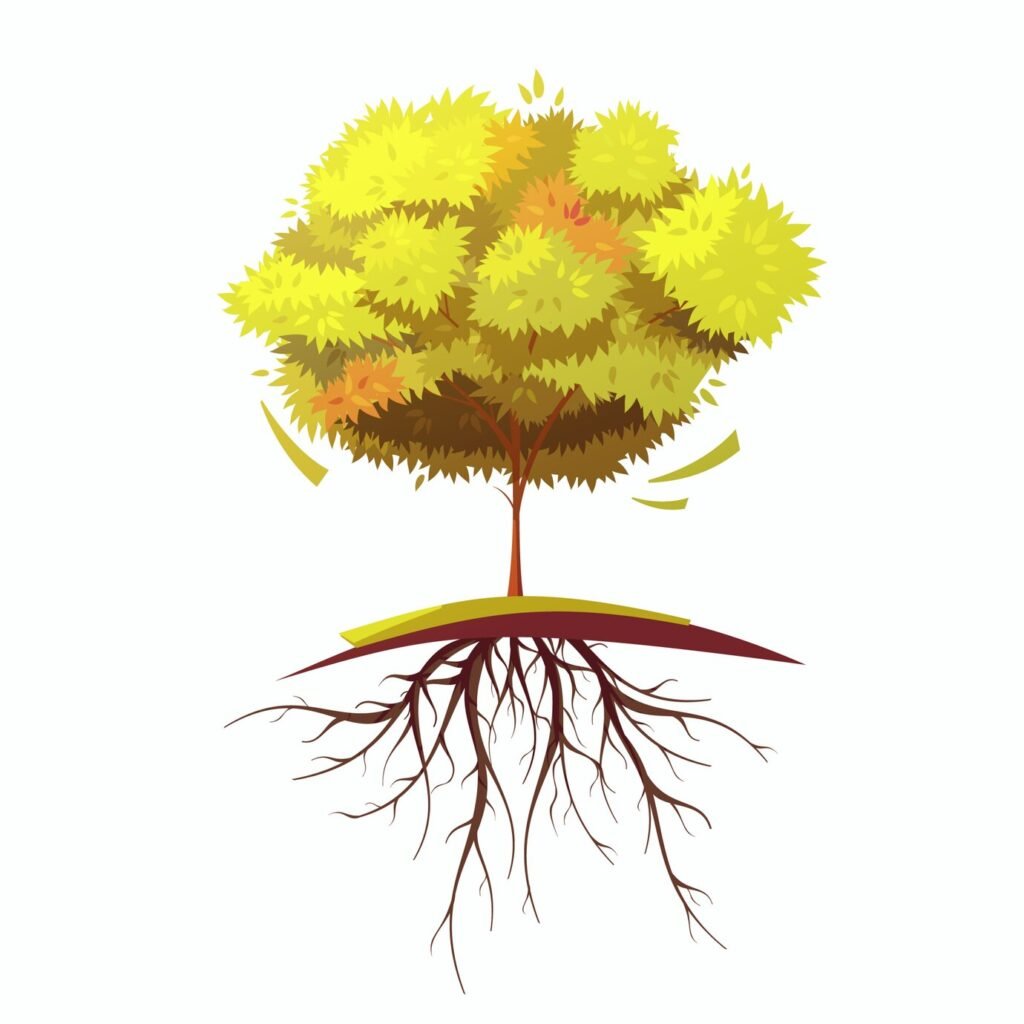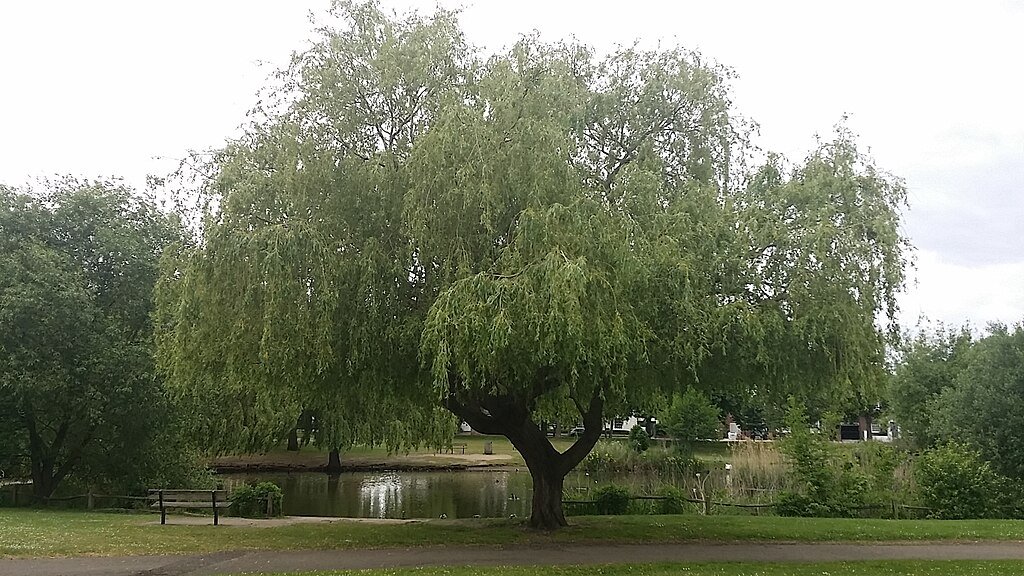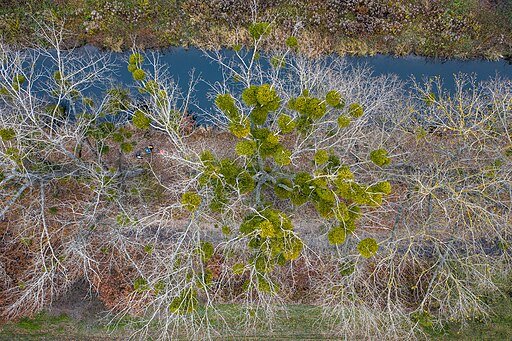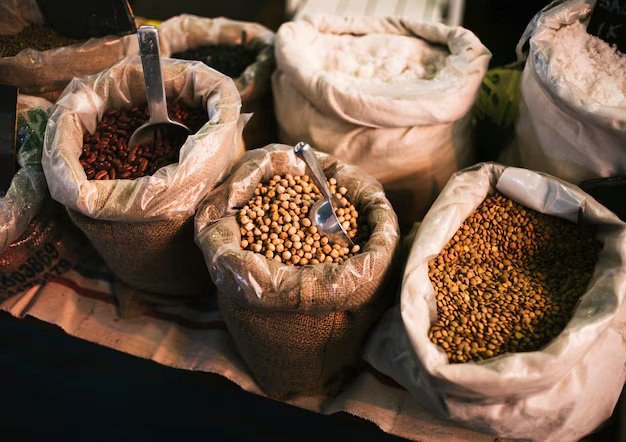Deep-Rooted Plants for Erosion Control
Planting deep‑rooted vegetation to battle erosion isn’t just theory — it’s a well-established, proven approach in conserving soil. While the exact numbers can vary by slope, soil, and climate, research shows that adding a dense mix of native grasses and shrubs can reduce soil erosion by as much as 90% or more under heavy rain. This dramatic improvement happens because their roots help hold soil in place, strengthening its structure and resistance to erosion.
What makes this so effective? Scientists have found that soil erosion drops exponentially as root mass increases, following the formula:
Soil Erosion Parameter = e−b · root mass density
This means even small increases in root density can make a huge difference. The roots act much like a natural mesh or net, securing soil particles against being washed away by rain or dislodged by strong winds. This process helps protect slopes, prevents sediment from clogging streams, and maintains agricultural productivity.

In This Article
- What Is Erosion and Why Does It Matter?
- How Deep Roots Prevent Erosion
- Top Deep-Rooted Plants for Erosion Control
- Real‑World Applications of Different Deep-Rooted Plants for Erosion Control
- Criteria for Selecting Deep-Rooted Plants
- Common Mistakes to Avoid
What Is Erosion and Why Does It Matter?
Soil erosion is the gradual wearing away of the fertile top layer of soil by natural forces like rain, wind, and gravity. According to the FAO, we lose an astonishing ~75 billion tonnes each year—far more than natural processes can replenish. This is critical because that thin layer contains the nutrients and organic matter essential for growing our food.
When topsoil disappears, plants struggle. The UN reports that in severely eroded areas, crop yields can drop by up to 50%, putting food security at real risk. In Africa, over 65% of productive land is already degraded, raising concerns about feeding future generations. Experts predict that by 2050, erosion may shrink global crop production by 10% if left unchecked.
Types of Erosion
- Sheet erosion is a uniform, almost invisible removal of soil in thin layers, like pages being peeled from a book.
- Rill erosion occurs when small streams of runoff cut shallow channels into the soil.
- Gully erosion is more severe, creating deep, wide trenches—often several meters deep—that are difficult to repair.
Consequences of Erosion
- Reduced agricultural productivity: When fertile topsoil washes or blows away, crop yields suffer significantly. A meta‑analysis of “topsoil removal” experiments found that losing just 10 cm of topsoil slashes crop productivity by an average of 26.6 %. Globally, erosion already costs farmers around $8 billion annually through reduced yields, greater water use, sedimentation, and water pollution.
- Increased flooding: Erosion reduces the soil’s ability to absorb water, causing more rainwater to become runoff and increasing the risk of flooding.
- Sedimentation in rivers and lakes: Soil washed into waterways smothers fish habitats, hurts water quality, and leads to issues like algal blooms.
- Land degradation and even desertification: Erosion strips the land so much that it may never fully recover. As the UN predicts, more than 90% of soils could be degraded by 2050.
And the ripples go far beyond farming—erosion affects water purification, climate regulation, and ecosystem health. It’s one of our planet’s most urgent environmental challenges.
How Deep Roots Prevent Erosion
Deep-rooted plants are nature’s anchor system. Their roots burrow several feet (sometimes even meters) into the ground, creating a network that stabilises soil, prevents runoff, and replenishes groundwater.
Here’s how they help:
- Stabilising slopes and riverbanks: Roots grip the soil like natural bolts, vastly increasing resistance to erosion and even landslides. For example, a University of Sydney study found that native trees like Sydney red gum and blueberry ash, with their deep roots, greatly reduced landslide risk on waterlogged slopes.
- Enhancing water infiltration: Root systems improve soil porosity. When rain falls, more water soaks in instead of running off. Oklahoma State Extension highlights that vegetation can reduce runoff from 60–70% down to 10–20% by boosting infiltration and slowing surface flows.
- Slowing water velocity: Surface roots and plant cover act like speed bumps, reducing the energy of flowing water that otherwise would carve away soil.
- Recharging groundwater: As roots promote infiltration, extra water penetrates deeper, replenishing underground aquifers.
A review in Trends in Plant Science shows that selecting deep-rooted crop species or breeding crops with deeper roots can significantly improve drought resilience and soil stability. Another study found that in well‑drained uplands, plant roots often extend into areas where rainwater or snowmelt collects, linking the land surface directly to deeper water zones.
Top Deep-Rooted Plants for Erosion Control
1. Vetiver Grass (Chrysopogon zizanioides)
Root depth: Up to 3–4 m within the first year
Ideal for: Tropical and sub‑tropical slopes, riverbanks, highways, and railway stabilisation.
Vetiver is a non‑invasive, clumping grass prized for stabilising steep terrain. Its roots plunge up to 3–4 m deep, firmly anchoring the soil. World Bank developments in tropical zones have used vetiver hedgerows to trap sediments, slow surface runoff, and protect slopes from heavy rain and floodwaters.
Case Study – Fort Polk, Louisiana & St. Lucia (1990–1991): At Fort Polk, vetiver was planted across tank‑damaged washes. Within 10 months, hedges were mature enough to trap up to half a meter of new sediment behind them. On volcanic slopes in St. Lucia, farmers used contour‑planted vetiver hedges to strengthen gullies; today, they’re rooted deeply in local farming systems.
Effectiveness & Design: A 2023 review noted vetiver could reduce erosion by over 90% on steep 75% slopes. Lab studies in Bangladesh showed vetiver‑reinforced soil boosts slope safety factors by 1.8–2× compared to bare soil. Coastal erosion research suggests 15 × 15 cm spacing effectively shields slopes from intense rainfall.
Why it works: Vetiver grows stiff, standing upright (even in flood), and filters out sediment. Its dense roots enhance shear strength (~75 MPa tensile strength), and its hardy nature tolerates pH extremes and heavy metals.

2. Switchgrass (Panicum virgatum)
Root depth: 3–3.3 m common; up to 10 ft (3 m+) reported
Ideal for: Temperate climates, prairie restorations, dikes, slopes
Switchgrass is a native North American prairie grass with an impressive root system, sometimes reaching 3–10 ft deep. It establishes slowly (2–3 years to full biomass), then forms deep, fibrous roots that lock down soil and capture nutrients.
Environmental Benefits: USDA research highlights switchgrass’s effectiveness on strip‑mine spoils, sand dunes, dams, and fields prone to wind erosion. Planting it in agricultural land reduces nitrogen runoff—even in large energy‑crop models, runoff dropped roughly 4%.
Deep Nitrate Capture: An OUP 2021 study showed switchgrass roots not only go deep but actively scavenge nitrate and water, helping prevent groundwater leaching.
Ideal Uses: Switchgrass works beautifully in temperate zones: as prairie restoration, along watershed edges, in fields, and on slopes—even with seasonal flooding.

3. Alfalfa (Medicago sativa)
Root depth: Typically 2–4 meters, sometimes deeper. Under ideal conditions, roots can reach 15–20+ meters.
Ideal for: Pastures, dryland or rangeland agriculture, wind-prone zones, and farmland slopes.
Why it works: Alfalfa’s taproot is remarkably deep and robust. That means it holds soil layers together far below the surface, where most erosion starts. According to a recent agronomy experiment in Northern China, alfalfa grassland cut soil loss in half (24 vs. 50 t/ha/yr) and nearly tripled soil retention compared to croplands. That’s real impact: you plant alfalfa, and over seasons, wind and water erosion drop dramatically.
Another study in Idaho highlights that while 70% of water uptake comes from the upper 1.2 m, alfalfa’s roots can extend beyond 4 m (up to ~12 ft), tapping deep moisture and helping reduce surface runoff. Deeper roots also provide extra soil cohesion, enhancing slope stability on hilly farmland.
Best practices:
- In sloped fields, pair alfalfa with a companion crop or no-till practices to protect young roots
- Timing matters: harvesting frequency affects how long the soil is exposed. Fewer cuts = better protection, especially in windy or wet seasons.

4. Willow (Salix spp.) and Poplar Trees (Populus spp.)
Root Depth: Willows typically send their roots down about 3–6 feet (1–2 m), although in moist, nutrient-rich soils they can extend sideways as far as 30 feet and grow even deeper under drier conditions. Poplars, on the other hand, develop both horizontal and vertical roots: their lateral roots can stretch over 10 m, while their vertical “sinkers” reach around 1 m — sometimes even further in looser soils.
Why They Work:
- Rapid establishment: Willows, in particular, root easily from simple cuttings, even without planting in soil. An Illinois state project documented how willow-posts—cuttings driven into streambanks—rapidly bind soil and slow floodwaters within months, all at just $7–15 per foot (versus $50–200 per foot for engineered banks).
- Dual-action stabilisation: Roots bulk up underground, while foliage disrupts fast-moving water above. This dual effect stabilises weak banks and allows other vegetation to flourish.
- Eco-friendly & low-cost: Willows are native in many areas, require minimal upkeep, and form resilient, self-sustaining riparian areas with added biodiversity and shade.
The Evidence: In Iowa’s Middle Raccoon River watershed, willow-post plantings curbed erosion dramatically on previously bare banks, showcasing wood-based bioengineering’s power. USDA guidance consistently endorses willow cuttings as an approachable, cost-effective method to manage streambank destabilisation.


5. Buffalo Grass (Bouteloua dactyloides)
Root Depth & Characteristics: Buffalo grass, native to the Great Plains, spreads by stolons and develops a dense root network—fine but strong—reaching 4–6 feet deep, with most roots within the top 6 inches of soil. That means it covers soil densely, blocks wind, and stabilises it effectively.
Ideal Uses: This grass thrives in arid and semi-arid climates, handling heat, wind, and drought. You’ll find it used on dry urban sloping areas, highway shoulders, and lawns aiming for low maintenance, yet efficient soil cover.
Low Maintenance: It’s drought‑tolerant, slow‑growing, and survives with minimal watering or mowing. In Texas trials, buffalo grass had higher survival rates (85–98%) than bermudagrass and offered a non-invasive alternative that avoids ruining nearby asphalt. Its dense sod makes it one of the best wind erosion controllers among native grasses.
Case in Point: Across the Great Plains, buffalograss has naturally reclaimed old roads and croplands within a decade. Its expansion over abandoned sites displays its soil-binding power, minimising wind and water erosion.

Case Study Table: Root Depth vs Erosion Reduction
| Plant Species | Avg. Root Depth (m) | Erosion Reduction (%) | Suitable Zone / Use Case |
|---|---|---|---|
| Vetiver Grass (Chrysopogon zizanioides) | 3–4 | Up to 90% | Tropical & sub-tropical slopes, riverbanks, roadsides, railway embankments |
| Switchgrass (Panicum virgatum) | 3–3.3 (up to 3.5) | Moderate to high | Temperate prairies, dikes, sand dunes, reclaimed mining land, flood-prone areas |
| Alfalfa (Medicago sativa) | 2–4 (can reach 15+) | 50% or more (in real field trials) | Dryland farms, pastures, rangeland, and sloped agricultural land |
| Willow & Poplar Trees (Salix & Populus spp.) | 1–2 (can extend laterally 10–30 m) | 70–90% (streambank stabilization) | Moist streambanks, riversides, riparian buffer zones |
| Buffalo Grass (Bouteloua dactyloides) | 1.2–1.8 (most roots shallow) | High wind erosion control | Arid/semi-arid zones, urban slopes, roadside shoulders, dry lawns, and low-maintenance erosion-prone areas |
Real‑World Applications of Different Deep-Rooted Plants for Erosion Control
1. Agricultural Terraces in East Africa
In central Kenya, farmers have successfully used Napier grass (Pennisetum purpureum)—a robust, deep‑rooted tropical grass—as contour hedges along sloping maize terraces. Within a year, soil losses dropped dramatically compared to bare control plots, and benefits only grew over time. When Napier was paired with nitrogen‑fixing shrubs like calliandra or leucaena, erosion control improved even more, and maize yields stayed strong. For farmers in Kenya and neighbouring regions, this simple strategy cut erosion by as much as 75%, while enhancing soil fertility and food security
2. Urban Green Spaces in Los Angeles
In the heat‑soaked neighbourhoods of Los Angeles, well‑chosen trees are doing more than beautifying sidewalks—they’re combating erosion and heat at the same time. UCLA researchers shared that expanding tree cover and reflective surfaces could cut heat‑related emergency room visits by up to 66%, in part because trees slow stormwater runoff and hold soil with their roots. Community groups in LA are now planting drought‑resistant species like silverleaf oaks and rosewoods—trees that run deep, shade wide, and help keep topsoil from washing away.
3. China’s Loess Plateau Reforestation
Perhaps the most dramatic example comes from China’s Loess Plateau. Starting in 1999, the massive “Grain to Green” program converted steep, erosion-prone farmland to forests and grasslands. By 2010, vegetative cover was up about 25%, and erosion rates dropped from roughly 6,580 t/km²/year to just under 1,990 t/km²/year. A 2024 watershed study adds that this shift slashed sediment transport into the Yellow River basin by 3.6 × 10⁸ t annually. Research into key shrubs like Caragana korshinskii and Hippophae rhamnoides found their extensive root systems bind soil efficiently, making them ideal for slope protection.
Criteria for Selecting Deep-Rooted Plants
When you’re picking plants to control erosion, think about these five key points:
- Root Depth and Structure
- Taproots (like dandelions or young trees) send a main root deep into the soil. They stabilise slopes and access deeper moisture, making them great for long-term anchoring.
- Fibrous roots (common in grasses and wheat) form dense mats near the surface. These trap soil and water, rapidly protecting the topsoil—a critical advantage after rainstorms
- Growth Habit
- Ground-cover plants (like certain grasses) spread widely, gripping the soil closely.
- Upright plants (trees, shrubs) anchor more deeply or vertically—use both types to layer protection.
- Climate Compatibility: Choose native species adapted to your region. They’re tougher, better at coping with local weather and pests, and usually need less help.
- Speed of Establishment: Fast-growing plants shield the soil quickly. Controlled flume experiments found that Napier grass (Pennisetum purpureum) reduced sediment loss by ~85% within 90 days of planting, and by up to 96% after 150 days of growth under simulated heavy rainfall. Roots played the biggest role, accounting for over 60% of sediment retention.
- Low Maintenance Requirements: Ideally, you want plants that settle in and thrive with minimal watering or upkeep. Native deep-rooted species typically fit the bill, needing little intervention once established.
Common Mistakes to Avoid
- Choosing shallow-rooted ornamentals: They might look lovely, but shallow roots often just sit on the surface and don’t anchor the soil effectively. To properly hold soil in place, you need plants with roots that form a dense, interwoven network—studies show erosion rates drop exponentially as root mass increases.
- Ignoring soil type: Every soil is different. Clay-heavy soils retain water and nutrients, but drain poorly and compact easily. If you plant deep-rooted species in clay without amendments, their roots may not reach deep enough to stabilise the soil. Knowing your soil texture helps you choose plants that can thrive, or decide where to work in compost or gypsum.
- Planting too sparsely: Leaving gaps between plants may look tidy at first, but those bare patches let rain hit the earth directly, washing soil away . Aim for full, overlapping coverage so roots and foliage shield the soil year-round.
- Skipping early maintenance: The first two years are critical. Erosion-control plantings need regular watering, weeding, and occasional reinforcement—neglecting this can undo all your work. The EPA highlights that even effective erosion barriers require ongoing inspection and care.
Learn More: Prairie Strips Reduce Soil Erosion by Up to 95%, According to Study
Conclusion: Actionable Steps to Get Started
- Assess Your Erosion Risk: Use tools like USDA’s RUSLE or consult a local soil conservation expert.
- Test Your Soil: pH, composition, and nutrient levels will affect plant success.
- Choose Appropriate Species: Use native, deep-rooted options suitable for your zone.
- Plan for Maintenance: Watering, weeding, and mulching are essential in the first season.
- Integrate with Other Methods: Terracing, mulching, and contour farming enhance the effect.







